Grosvenor Square in the heart of Mayfair in London has often been called ‘Little America’, although it actually takes its name from the Grosvenors, the family who own the land there. It is where the first American Consulate in Britain was found, the consul being John Adams, who later became America’s second president. He was a Founding Father, and the wish to establish cordial relations with the former enemy nation is part of the reason he moved to a house in Grosvenor Square at the corner of Brook and Duke Streets, one which still stands.
General Dwight D Eisenhower used Grosvenor Square as his headquarters in World War II. A plaque on the northern side of the square marks the spot where he supervised the troops and planned the D-Day landings in Normandy, which cost so many American lives on Omaha and nearby beaches. He often had a difficult relationship with General Montgomery, the British commander in the war, and – although the two were always civil in public – it was rumoured that Monty, as he was almost universally known, would not allow anyone to smoke in his presence, including Eisenhower, despite being of a lower rank. The differences between the two men became apparent when they published their memoirs after the war.
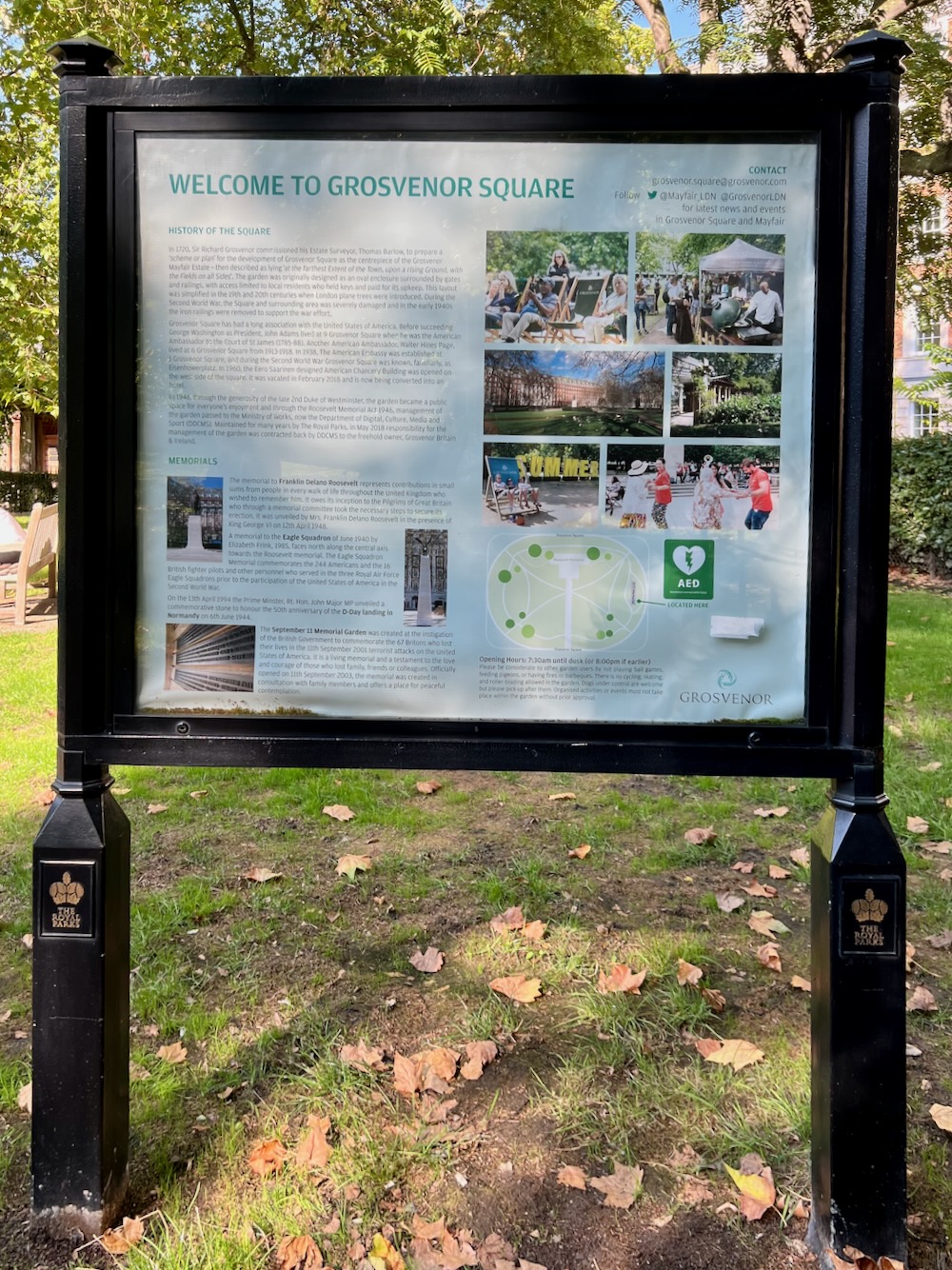 Welcome to Grosvenor Square in London. Photo Credit: © Ursula Petula Barzey.
Welcome to Grosvenor Square in London. Photo Credit: © Ursula Petula Barzey.
With so many American connections, it is not surprising that Eisenhower (who was known as ‘Ike’) chose Grosvenor Square for the site of the US embassy in London. It is even said that Eisenhower, when he met the Duke of Westminster at a cocktail party, told him to name his price for Grosvenor Square, as the USA liked to own the land on which their embassies stood. The Duke took him up on the offer and agreed to give Grosvenor Square to the USA if all the land which his family had owned in America before independence was returned to him. As this included the city of Miami in Florida, that deal never came about. The Duke rewarded American involvement in the war by only charging a nominal rent for the use of the land.
The Finnish-born architect Eero Saarinen designed what became the first purpose-built embassy in London and this building is now regarded as a modern classic with its famous eagle which has a wingspan of thirty-five feet (eleven metres). The eagle was designed by Theodore Roszak and is part of the design which won the embassy listed status in 2009. The American embassy was originally on the other side of the Square in a building that was taken over by the Canadians and is named MacDonald House. It is now being developed as luxury apartments. Since 1923, Canada has owned an embassy in Trafalgar Square.
The embassy building, which was opened in 1960 but designed in the 1950s is no longer used to represent the interests of the American people and was turned into the Chancery Rosewood hotel which opened in 2025, the price of a room there starting at £1400 a night. The US government had passed a law that mandated all American embassies to have a front entrance at least 100 feet from the nearest road to prevent terrorist attacks. The Duke of Westminster was not prepared to allow this in Grosvenor Square and, following protests by local residents after the closure of roads near the square, the US Embassy relocated.
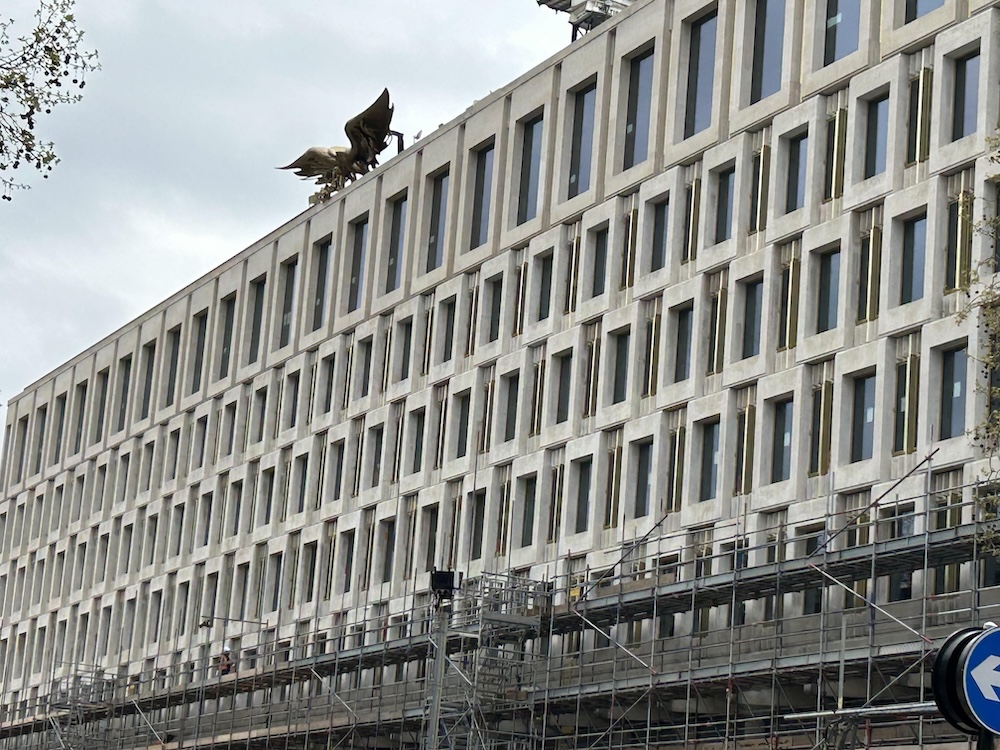
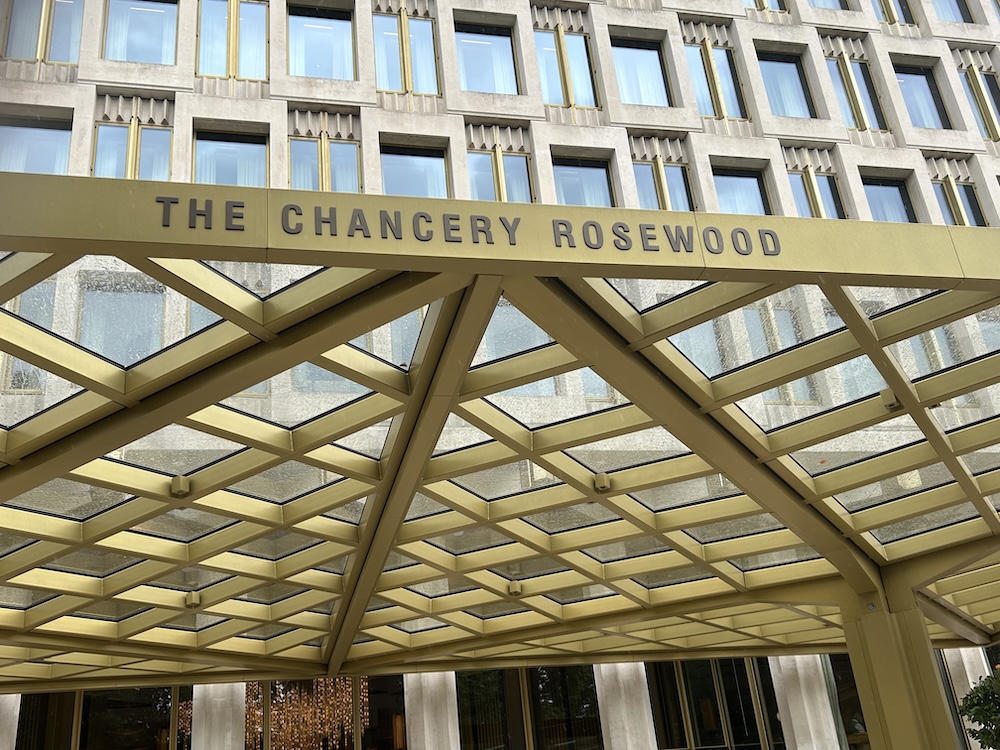 Entrance to the Chancery Rosewood Hotel the former home of the US Embassy. Photo Credit: © Edwin Lerner.
Entrance to the Chancery Rosewood Hotel the former home of the US Embassy. Photo Credit: © Edwin Lerner.
The embassy has now moved to Vauxhall and is the only major one in London to be found south of the Thames. The American President Donald Trump was invited to open the building officially but he refused, saying that he did not like it. He blamed former President Barack Obama for it, although it had been designed long before Obama came to power.
Grosvenor Square has memorials to the sixty-seven Britons who died in the 9/11 attacks on New York in 2001 and to the Eagle Squadron, American flyers who volunteered to fight in the Battle of Britain against the Nazis before America declared war on Japan and Germany. The Battle of Britain was fought by the Royal Air Force in the late summer and autumn of 1940 before the attack on Pearl Harbour – and American involvement in the Second World War – in December 1941. These memorials will remain as the Square is redeveloped.
In Grosvenor Square, there are also statues of no less than three American presidents. These are Ronald Reagan, Eisenhower himself and Franklin Delano Roosevelt. They were paid for by the British government and represent half of the statues of US Presidents in London, the others being George Washington in Trafalgar Square, Abraham Lincoln in Parliament Square and a bust of John F Kennedy at International Student’s House in Great Portland Street, Marylebone. It was unveiled by JFK’s brother Bobby in 1965 who served as his brother’s Attorney General. Kennedy’s bust was brought there after a vandalism attack at its original location in Marylebone High Street. Like JFK, Bobby Kennedy was assassinated.
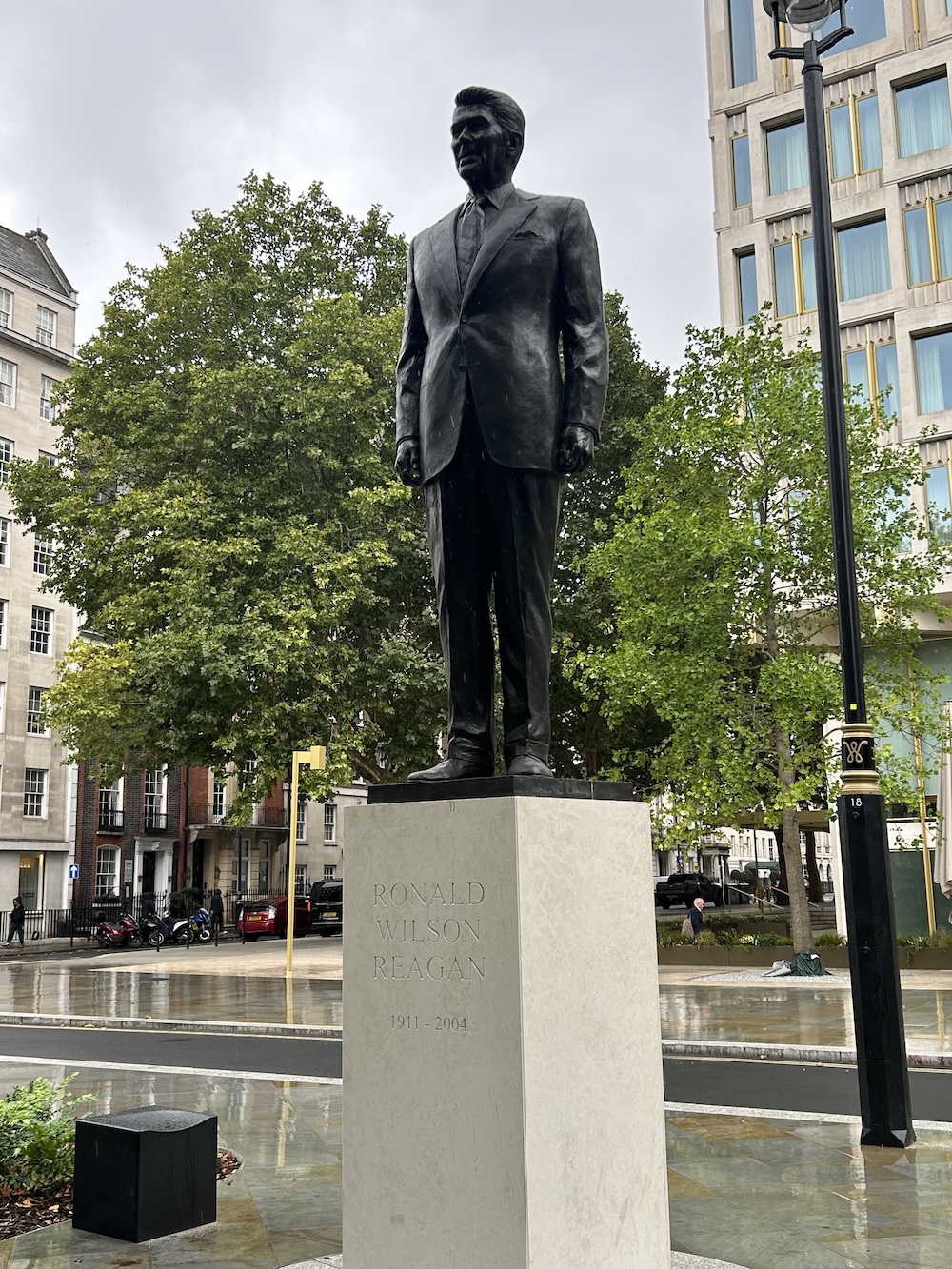 Ronald Reagan Statue in Grosvenor Square. Photo Credit: © Edwin Lerner.
Ronald Reagan Statue in Grosvenor Square. Photo Credit: © Edwin Lerner.
Both were the sons of Kennedy’s father Joseph Kennedy, who was American Ambassador to Britain between 1938 and 1940. The house in which the Kennedy family lived can be seen at Kensington Gore near Hyde Park and is decorated with distinctive red Indian heads. Since 1955, the US ambassador has lived at Winfield House in Regent’s Park in a house once owned by the Woolworths heiress Barbara Hutton, who sold it to the USA for one dollar.
The statue of Franklin D Roosevelt in Grosvenor Square was paid for by the British people who wished to see a memorial to a man considered a friend of Britain during the Second World War. Ordinary people each contributed a small amount to a fund which was set up by the British parliament and the statue was unveiled by Roosevelt’s widow. It was sculpted by William Reid Dick and lists the four freedoms Roosevelt championed – ‘from want, from fear, freedom of speech and freedom to worship’. The statue is controversial as it shows Roosevelt standing up whereas, by the end of his life, he needed to use a wheelchair, a fact he concealed from people with the help of the photographers who took pictures of him.
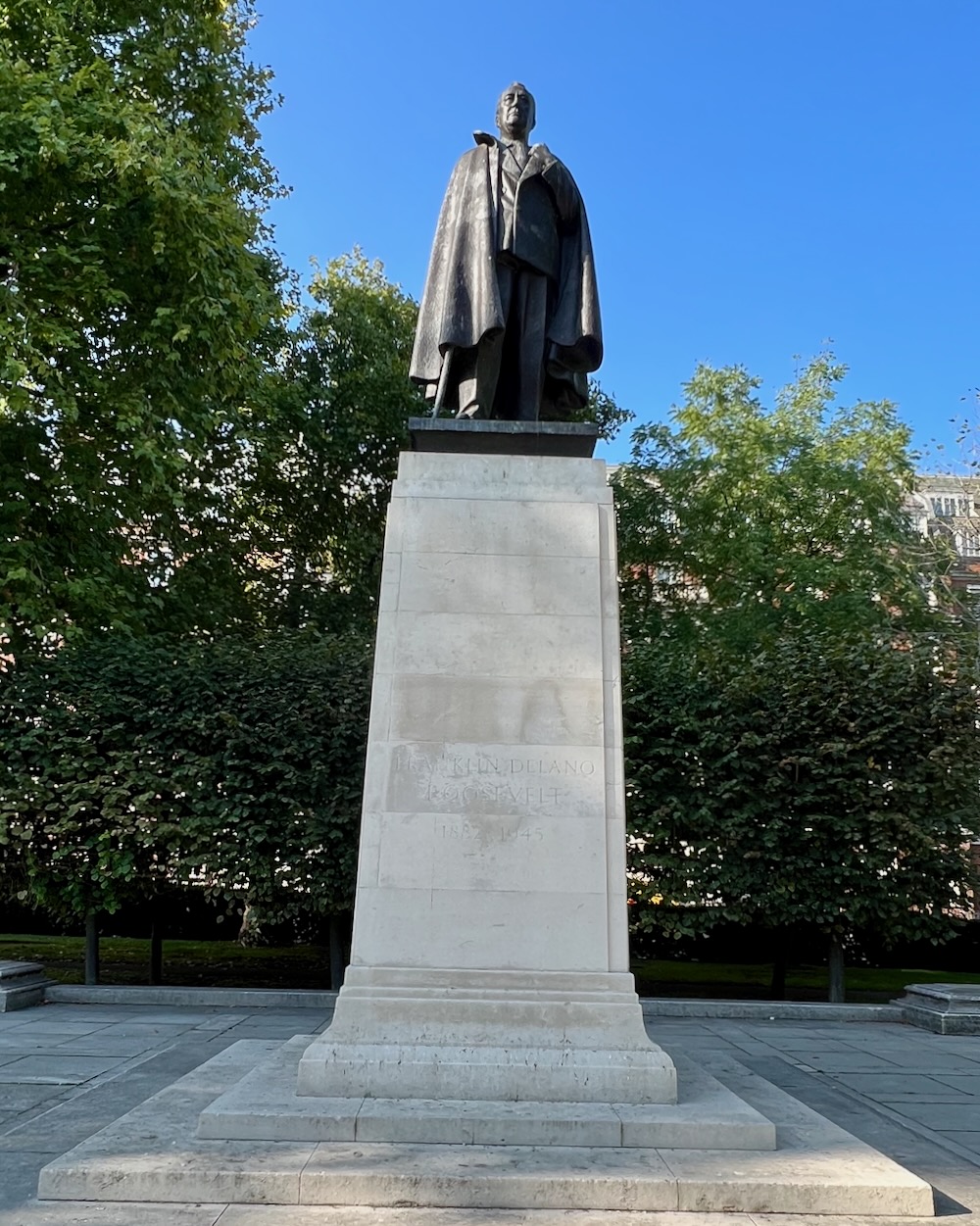 Statue of American President Franklin Delano Roosevelt in Grosvenor Square in London. Photo Credit: © Ursula Petula Barzey.
Statue of American President Franklin Delano Roosevelt in Grosvenor Square in London. Photo Credit: © Ursula Petula Barzey.
Roosevelt is unusual in that there are not one but two statues of him in London. The official memorial to him is in Grosvenor Square and a more informal portrait can be seen in Bond Street in which he is shown chatting to his friend and wartime colleague Winston Churchill. This statue was unveiled by Princess Margaret in 1995 and is called Allies.
Another Founding Father and signer of the Declaration of Independence was Benjamin Franklin, whose face can be seen on the American $100 bill. Franklin never served as president and always regarded himself as a tradesman, signing his name with the name of his profession, ‘printer’. However, he is regarded as one of America’s major figures, a philosopher and inventor, who is seen as the father of electricity. His house in Craven Street is the only surviving home Franklin lived in and is open from Wednesday to Sunday.
Whatever the political differences between the two countries, Britain and the USA have now long since been allies and many visitors to London come from America and like to be reminded of the links between the two countries. Whether they can afford to stay in the new Chancery hotel in the old embassy building in Grosvenor Square is another matter.



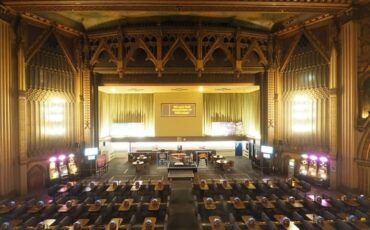
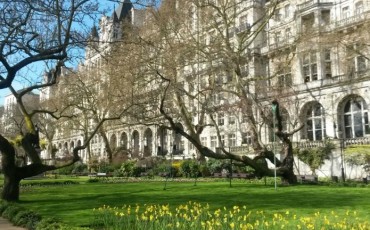

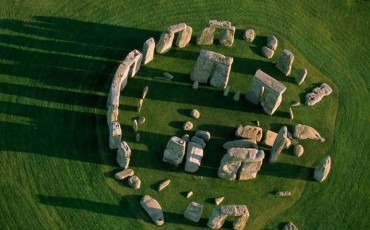
Leave a Reply